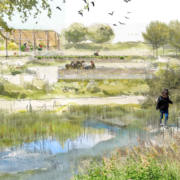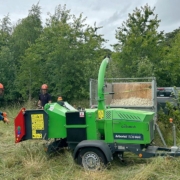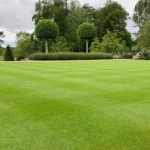How to keep your outdoor area healthy in summer
How to keep your outdoor area healthy in summer: A lack of water is a serious issue for lawns during the hot summer months, yet there are several ways you can limit the damage done to your grass.
- Try Mulch – To improve the performance and general health of your plants and make them more robust, regularly amend your soil with compost. Mulch your garden to help it retain moisture, and water it effectively. Use drip hoses with timers and water your plants’ bases first thing in the morning to reduce evaporation.
- No fertiliser – However, if you are in a region under a hosepipe ban, there is not much you can do. All you can do is raise the height of your lawnmower to slow down the rate of browning and resist the urge to put fertiliser on your grass as it is already under stress. But don’t worry too much, grass is very resilient and will return to its previous green, healthy state once the inevitable British rain reoccurs.

How to keep your outdoor area healthy in summer
How to protect your plants from wilting:
- Make containers bigger – Grass may have the ability to bounce back from a drought, the same can’t always be said of the plants in your garden. You are the sole source of moisture for pots and hanging baskets, and drying them out causes growth to slow down and eventually cease, and if the scenario persists, the plants will perish. As a result, you should make your containers bigger so they dry up more slowly.
- Water efficiently – Focus on watering the plants in your borders that require it the most, such as young plants, annuals, and vegetables. Established trees and shrubs that are planted in healthy soil should have deep enough roots to access water during all but the driest periods.
- Trim plants – If wilting plants appear to be salvageable despite the lack of water, try giving them a trim to help them regain their vigour. Also, deadhead and feed them frequently to keep them going until the rain returns.
How to protect your plants/vegetables/fruits from insects:
Insects are far more prominent and active in the summer months, especially when the weather is warm and dry, leading to potentially devastating consequences for your garden.
The Aphid is a small but active bug that attacks in groups and feeds on the fluids in the stems, leaves, buds, flowers, and fruit, and can cause issues to any garden.
- Attract predatory insects – In your garden, you may find it beneficial to introduce predatory insects as one method of pest management. Aphids, their larvae, fruit worms, and other hazardous insects are consumed by natural predators such as ladybirds, lacewings, and ground beetles. Therefore, consider growing pollen and nectar flowers in your yard to attract these six-legged pals before applying the pesticide.
How to prevent slug damage:
Slugs mate between March and June and favour warm, dry conditions, meaning their numbers are at their highest over the summer until temperatures start to drop in September. This can be dangerous for your garden, though, as they enter your garden covertly at night and eat the plant leaves.
- Attract birds and toads – With barriers made of copper strips, pine needles, or diatomaceous earth, you may be able to either catch them or try to scare them away. Additionally, you could entice toads and birds to your home since they enjoy feasting on slugs.
Toads need a moist place to live, such as under boards, loose rocks, and the roots of trees, which may be an issue in a drought, but attracting birds to your garden can be much easier. Simply set up some bird feeders and provide them with nesting boxes, and they should rid your garden of any slug infestation.
How to prevent your pond from turning green:
Ponds are fairly common features in gardens, and keeping them looking clean and aesthetically pleasing can be a difficult and time-consuming task, especially in summer. The issues pond owners face can be exaggerated in a drought as the water levels continue to drop while aquatic plants continue to grow at a rapid rate.
You want crystal-clear water, but in the summer, ponds may become green and have blanket weeds growing in them. A clear pond is achieved by allowing enough submerged oxygenating plants to do their job, as well as a portion of the pool’s surface being covered by floating aquatic plants that provide shade and absorb nutrients.
- Remove blanket weed – Ponds that are really small will rapidly warm up, and blanket weed will be a persistent issue. For a more consistent temperature, the optimal depth in the core is between 60 and 100 cm, and you can get rid of blanket weed by twisting it around a cane and pulling it out.
For more information visit infinitepaving.com
For the latest industry news visit landscapingmatters.co.uk/news
Get all of the big headlines, pictures, opinions and videos on stories that matter to you.
Follow us on Twitter and Instagram for fun, fresh and engaging content.
You can also find us on Facebook for more of your must-see news, features, videos and pictures from Landscaping Matters












